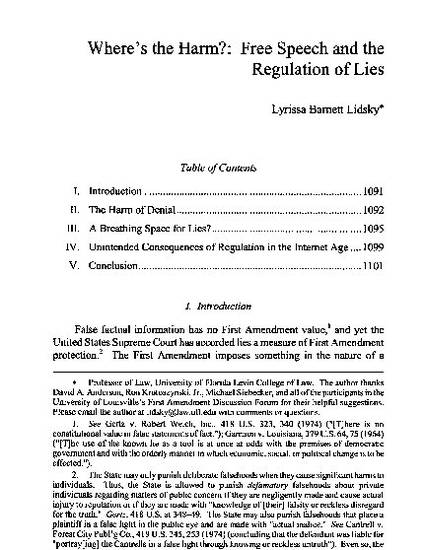
False factual information has no First Amendment value, and yet the United States Supreme Court has accorded lies a measure of First Amendment protection. The First Amendment imposes something in the nature of a presumption against government interference in public discourse. This presumption is rooted in suspicion of the State's ability to distinguish facts from falsehoods as well as its motives for doing so. However, the presumption against regulation of false speech is not absolute. It can be overcome when verifiably false speech poses a direct threat of harm to individual interests. Unlike other countries, the United States has never justified the regulation verifiably false speech on the grounds of that it poses a generalized threat of dignitary harm. Using Holocaust denial as an example of verifiably false speech this essay poses the question of whether such speech poses a more serious danger than First Amendment jurisprudence typically has acknowledged. In other words, this essay asks: Where's the harm in Holocaust denial? It then turns to the related question: Where's the harm in government suppression of verifiably false speech?
